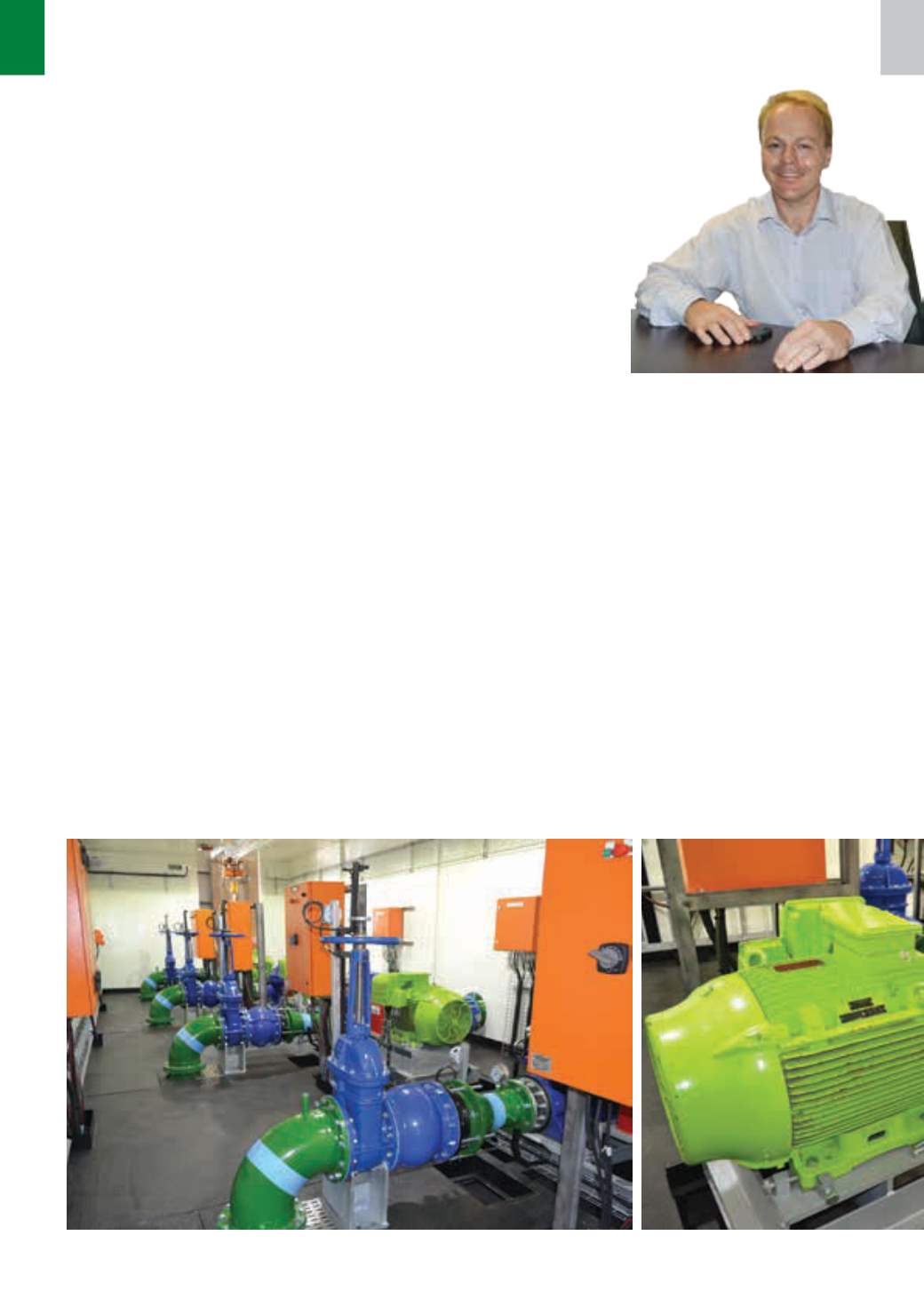

8
Mechanical Technology — February 2016
⎪
Special report
⎪
T
he idea underpinning large in-
tegrated modular plants arose
while Warwick Jackson was the
lead electrical engineer for Anglo
American – Kumba Iron Ore – SSP on
the development of its operations in the
Northern Cape. He had been told that it
was not feasible to build large substa-
tions offsite, because they could not fit
into standard ISO shipping containers,
making delivery impossible.
“After the meeting, I happened to
be driving behind a Komatsu 960 haul
truck. At 11,6 m wide, I realized that
products five times wider than conven-
tional ISO containers were being rou-
tinely delivered to sites all over Africa,”
Jackson says.
On discussing his observation with
his switchgear colleagues, Jackson was
advised to talk to Efficient Engineering.
“Johan Basson, who ran RBF at that
time, now JB Switchgear, recommended
Efficient, which, he said, was not afraid
of size,” he recalls.
“That is where my relationship with
Efficient began. I met Tony Cimato, the
then owner, who showed us how the
company made large buildings, control
rooms and huge shell structures to house
equipment: for shiploaders, e-houses,
and reclaimers, for example,” he adds.
For Kolomela, Efficient Engineering
was willing to build the shells for the sub-
stations, motor control centres (MCCs)
and control and instrumentation (C&I)
rooms as single integrated modules, and
fully equip them offsite. “So my staff and
I were given an office here at Efficient,
where we collaborated to build exactly
what we needed for Kolomela. It was a
fantastic way of working,” Jackson says.
The result was the development of
seven ‘buildings’ that met the project
requirements for the entire electrical
infrastructure needed at Kolomela: for
A revolutionary offsite approach
to plant projects
Following the successful deployment of seven modular ‘buildings’ for the electrical
infrastructure at the Kolomela mine, Efficient Engineering has pioneered the offsite
construction, assembly, testing and commissioning of complete modular plants
similar to as these, which include the containment structures and all functional
equipment.
MechTech
talks to Warwick Jackson (right), now the managing
director of Efficient Power and the inspiration behind this new approach.
the primary, secondary and tertiary
crushers; the run-of-mine conveyor; the
product screen; the load out station; and
the dewatering pump station.
“It was an amazing success. The
modular plants arrived on site 100%
commissioned. Our slogan was from
motor to mouse. Only once everything
was signed off at Efficient Engineering,
did we arrange delivery to site. Once
there, we connected the power cables
and everything worked,” he says.
On the Kolomela project, Anglo had
a R500-million budget for the electrical
and C&I infrastructure. For the seven
substations, the building budget was
R11‑million. “By taking the offsite modu-
lar approach, the shell structures cost
close to R15-million, but by the time we
had completed the installation, we had
under spent our R500-million electrical
budget by R83-million,” Jackson says.
So by agreeing to spend R4-million
















